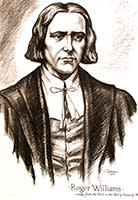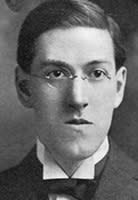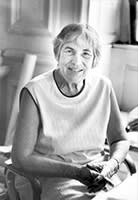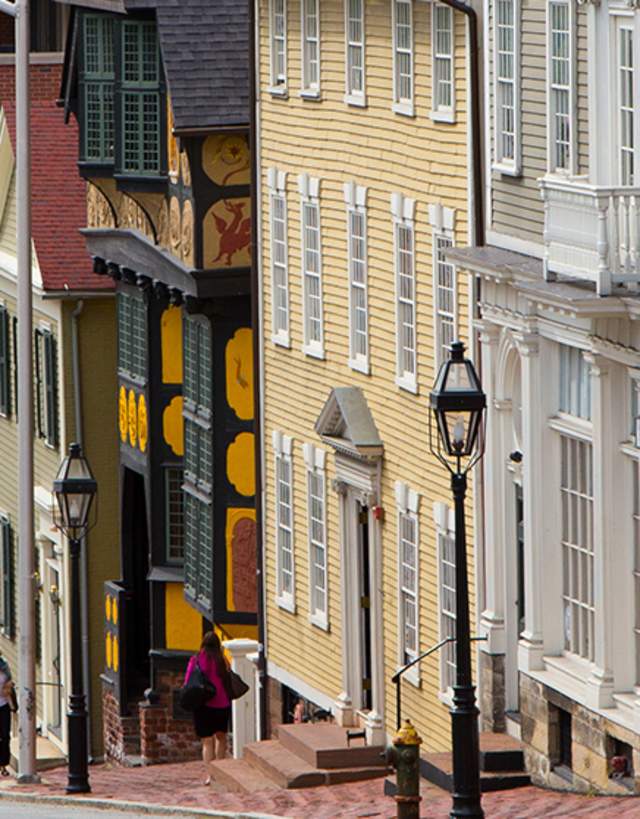Providence Walks: THE EAST SIDE Historic Tour
This walking tour is self-guided.
Click here to view a virtual version of the walking tour.
Printed maps are available at our Visitor Information Center at the Rhode Island Convention Center. Click here to view a full-size PDF of the map.
A Story of Innovators, Industrialists, Intellectuals and the Irrepressible
Providence is and always was a place for the fiercely independent. The visionary leader Roger Williams established the city in 1636 as a haven for freedom of conscience, where all people could practice their own religious beliefs, a place where they were not merely tolerated, but enjoyed the right of true equality. Freedom of thought reigned, which opened the way for freedom of action.
The economy boomed as the city grew into a great seaport in the 18th century and an industrial powerhouse in the 19th and early 20th centuries. Leading schools, libraries, art clubs and literary societies were established and the arts flourished. But boom times were followed by economic and social busts.
This tour was researched and written by John Tschirch, architectural historian, writer and photographer (johnstories.com).
-
Providence Personalities: The East Side
"I am Providence, and Providence is myself – together, indissolubly as one, we stand thro' the ages."
– H.P. Lovecraft

Roger Williams
(1603–1683)
Visionary thinker on religious freedom, equal treatment of Native Americans, and founder of Providence. Williams' ideas of liberty and freedom of conscience made Rhode Island a haven for persecuted religious groups and laid the groundwork for the ideas of liberty, equality and the separation of church and state in the U.S. Constitution. He wrote, "... that no civil magistrate, no King ... have any power over the souls or consciences of their subjects, in the matters of God ..."Click here for more information on Roger Williams >>
The Brown Brothers
Among the original settlers of Providence in the 1600s, the Brown family emerged as powerful financial, industrial and cultural leaders shaping many of the city's institutions through the centuries, from churches and schools to industry and historic preservation.
Moses: (1738–1836) Founder of the first abolitionist society in Rhode Island, Moses Brown was a philanthropist and pioneer industrialist.
John: (1736–1803) First from Rhode Island to enter the China Trade, John Brown was founder of the Providence Bank (the first bank in Rhode Island), industrialist, U.S. Congressman, and slave trader. He built the grandest house in town and entertained presidents.
Nicholas: (1729–1791) Nicholas Brown was a merchant and builder of a great fortune, and was instrumental in relocating Rhode Island College, later named Brown University, to Providence.
Joseph: (1733–1785) College professor, Joseph Brown was an astronomer and architect of several of the city's major 18th century landmark buildings.
William J. Brown
(1814–1885)
The son of slaves owned by Moses Brown, William was a free African American born in Providence. A sailor, shoemaker and temperance movement supporter, Brown wrote in his autobiography entitled Life (1883):
"Mr. Brown, my grandfather's master, seemed well satisfied with his help and thought that although they were his property ... (it was) hence wrong to confine them any longer to servitude ... This was some time before the general emancipation in the State."Click here for more information about William J. Brown >>
Matilda Sissieretta Jones
(1868–1933)
Born in Virginia, but later making College Hill in Providence her home, this world renowned soprano sang for four presidents at the White House and the British Royal Family. She was the first African American to perform at the New York City Music Hall, later known as Carnegie Hall.
 Margaret Bingham Stillwell
Margaret Bingham Stillwell
(1887–1984)
A resident of Benefit Street and the accomplished librarian of the Annmary Brown Memorial, Margaret Stillwell wrote two books defending the street's reputation in the 1940s when the area was in serious decline, calling for residents to repair buildings to "the spirit of youth which ... is still not too far gone to be recaptured." Her vision was realized ten years later when Antoinette Downing and John Nicholas Brown helped launch the Providence Preservation Society.

H.P. Lovecraft
(1890–1937)
A master of weird fiction, the East Side resident Lovecraft achieved fame after his death. Author Stephen King described him as "... the 20th century's greatest practitioner of the classic horror tale."Influenced by Poe, who spent time at the Providence Athenaeum, Lovecraft created a unique world of fantasy and the macabre in stories such as the "Cthulhu Mythos."
In his book "The Shunned House" (1924), inspired by a Colonial house on Benefit Street, his fascination for tombs is apparent.
Click here for the Guide to Lovecraftian Sites in Rhode Island >>

Antoinette Forrester Downing
(1905–2001)
Referred to as the matriarch of Providence preservation, Antoinette Downing championed the rescue and restoration of hundreds of 18th and 19th century buildings in the College Hill District. Her visionary work and tireless advocacy in the face of resistance helped save the architectural heritage of the city."The city planners are now saying nice things about little old ladies in tennis shoes." – Downing, The New York Times, May 2, 1985
Click here to read:
Her Mission is Preserving Providence – The New York Times, 1985 >>
The Irrepressible Society
A charitable organization founded in the mid-19th century by prominent ladies who lived on or near Benefit Street, the Irrepressibles raised funds to pay poor families to make clothing for those in need, as well as provide new shoes, coal and other household goods.Click here to learn more about how the Irrepressible Society served the community >>
-
East Side Historic Timeline
1636
Roger Williams establishes Providence as a place of religious freedom and liberty of conscience. – Click here for a brief bio of Roger Williams >>
1663
Rhode Island’s Colonial Charter is approved by King Charles II. It is the first time in modern history a monarch signed a charter guaranteeing individuals freedom to practice the religion of their choice without government interference.
1687
King James II of England issues the Declaration of Liberty of Conscience extending tolerance to all religions.
1772
Providence citizens burn the British ship Gaspee as an act of colonial defiance to British customs agents, later known as the "Gaspee Affair."
1784
The slave trade is abolished in Rhode Island. – Click here for a brief history of slavery in Rhode Island >>
1787
John Brown sends the first Providence ship George Washington to trade with China.
1828
The Blackstone Canal is completed as Rhode Island industry continues to expand.
1849
George Henry Corliss of Providence patents the Corliss Steam Engine, a technological innovation fueling the Industrial Revolution in America.
1938
A hurricane floods downtown.
1959
The College Hill Study, a landmark report to preserve the historic buildings of the East Side, is released. The study confirmed for the first time in America that preservation could be a tool of urban renewal.
1983
Ground is broken on the Capital Center re-development project, resulting in the shifting of rivers, train tracks and highways, and the re-shaping of Downtown Providence.
Click here to read a history of the project from the American Planning Association.
2011
Interstate Highway 195 is relocated from Downtown Providence to beyond the Fox Point Hurricane Barrier, allowing for future development.
